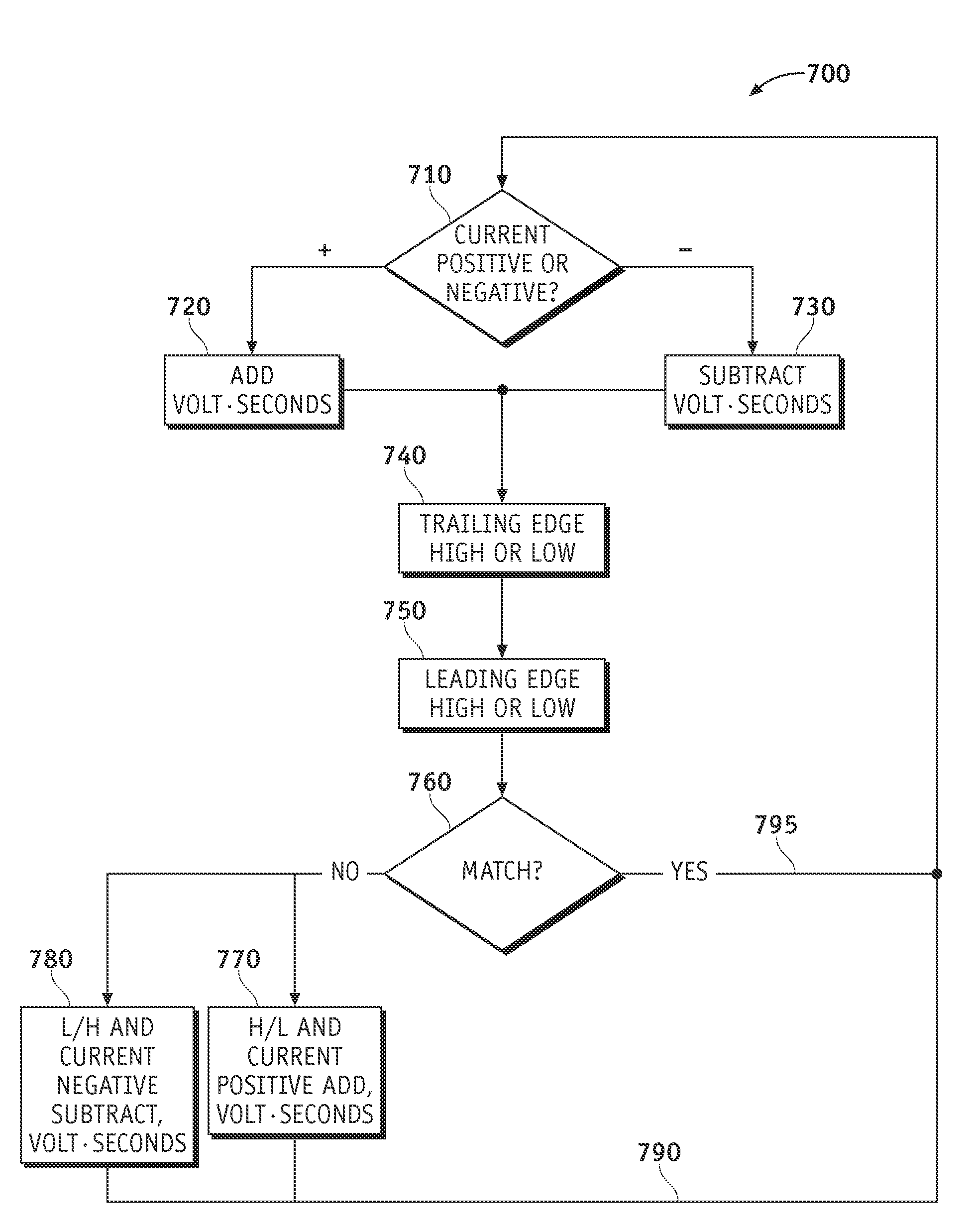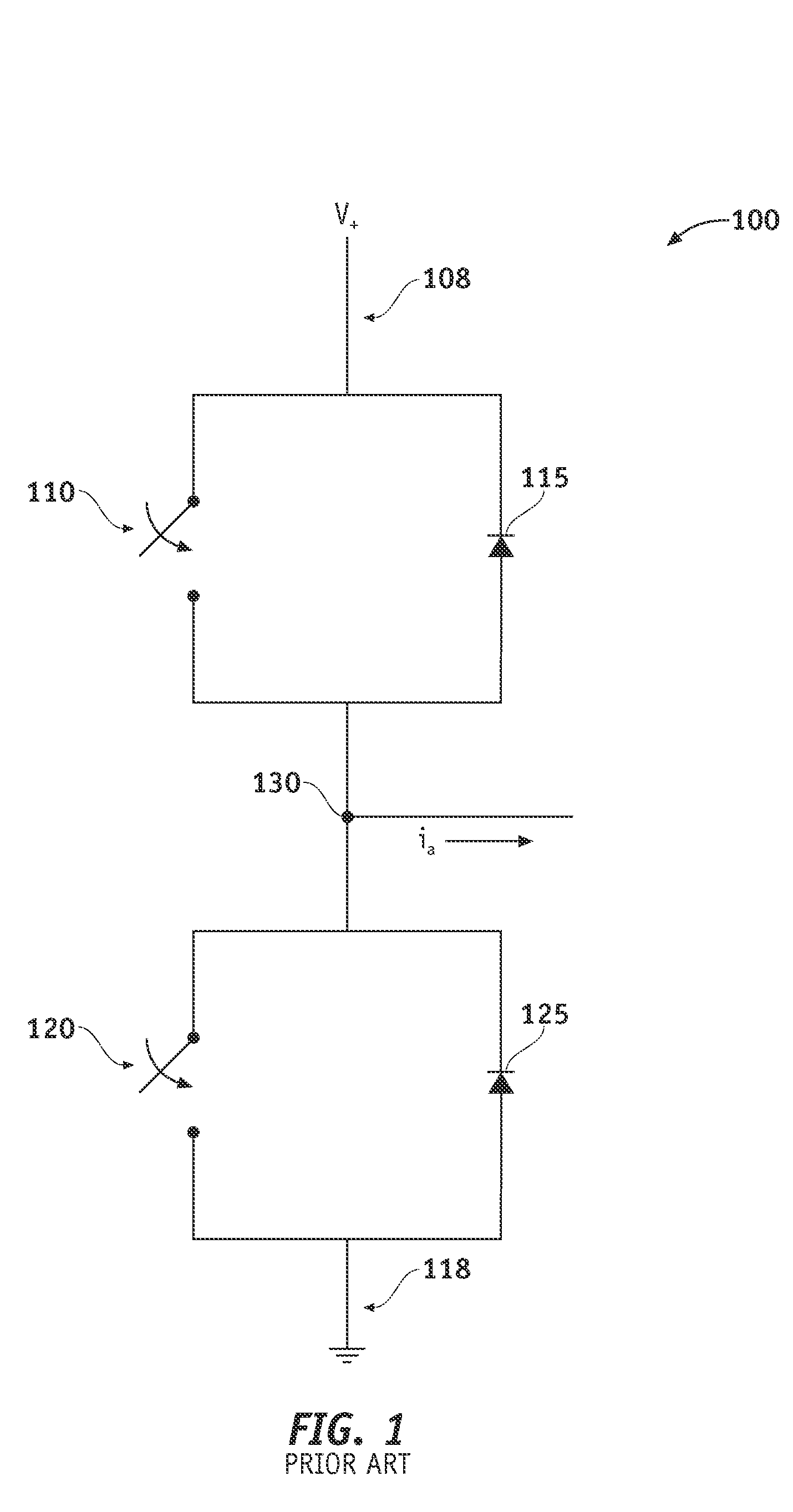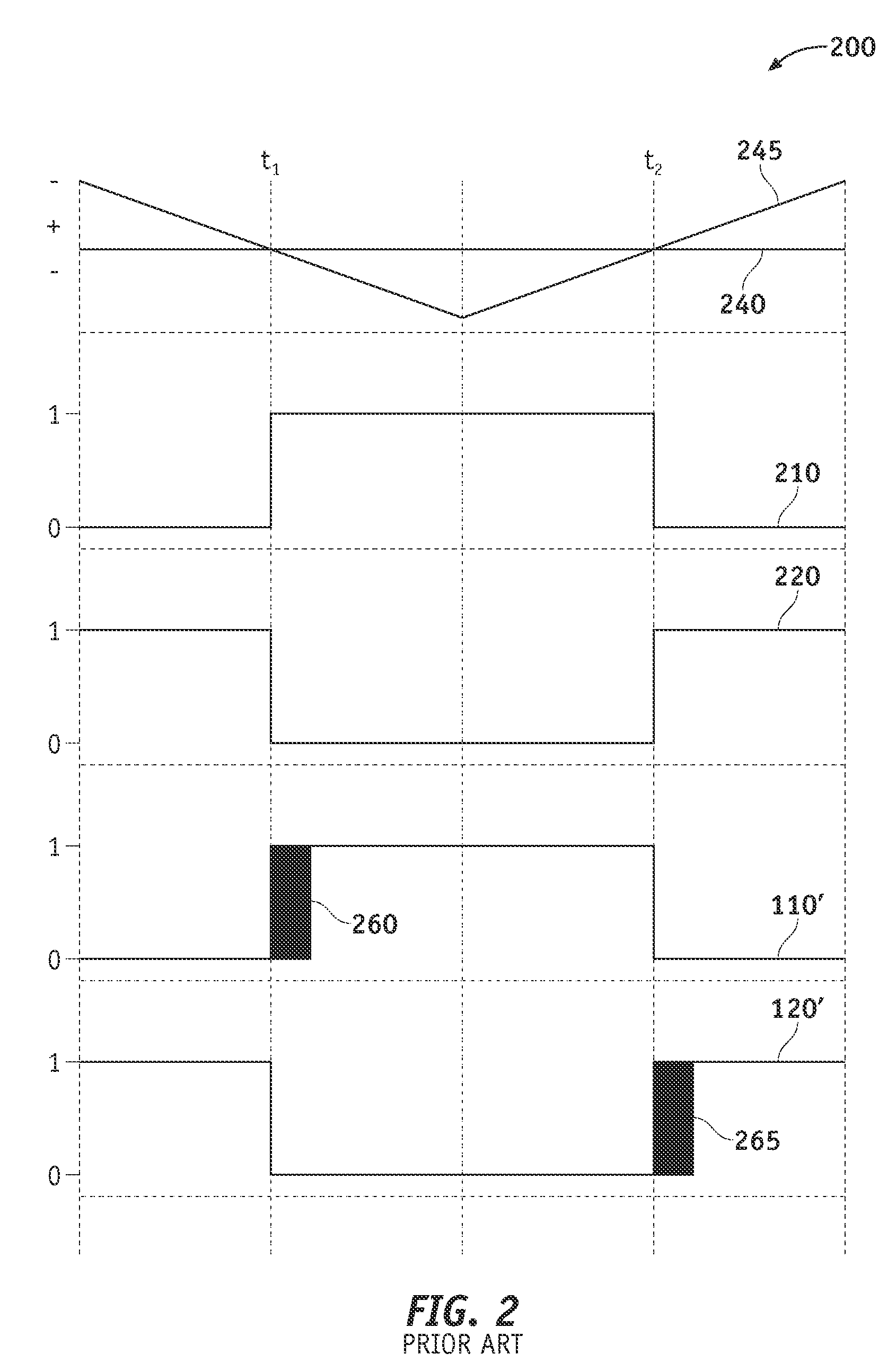Dead-time compensation method for electric drives
a technology of electric drives and dead-time compensation, which is applied in the direction of dc-ac conversion without reversal, process and machine control, instruments, etc., can solve the problems of additional voltage output deviation of inverter, switching between non-inverted and inverted carrier signals,
- Summary
- Abstract
- Description
- Claims
- Application Information
AI Technical Summary
Benefits of technology
Problems solved by technology
Method used
Image
Examples
Embodiment Construction
[0036]The following detailed description of the invention is merely exemplary in nature and is not intended to limit the invention or the application and uses of the invention. Furthermore, there is no intention to be bound by any theory presented in the preceding background of the invention or the following detailed description of the invention.
[0037]FIG. 7 is a flow diagram illustrating one embodiment of a method 700 for compensating for a deviation in output voltage in an inverter (e.g., inverter 100) when dead-time periods are utilized to prevent a shoot-through failure. In accordance with one embodiment, method 700 initiates by determining whether the current at node 130 is positive or negative when a current carrier signal arrives at inverter 100 (step 710).
[0038]When the current at node 130 is positive, in one embodiment, method 700 includes adding volt•seconds to the input signal of inverter 100 (step 720). When the current from node 130 is negative, in one embodiment, metho...
PUM
 Login to View More
Login to View More Abstract
Description
Claims
Application Information
 Login to View More
Login to View More - R&D
- Intellectual Property
- Life Sciences
- Materials
- Tech Scout
- Unparalleled Data Quality
- Higher Quality Content
- 60% Fewer Hallucinations
Browse by: Latest US Patents, China's latest patents, Technical Efficacy Thesaurus, Application Domain, Technology Topic, Popular Technical Reports.
© 2025 PatSnap. All rights reserved.Legal|Privacy policy|Modern Slavery Act Transparency Statement|Sitemap|About US| Contact US: help@patsnap.com



